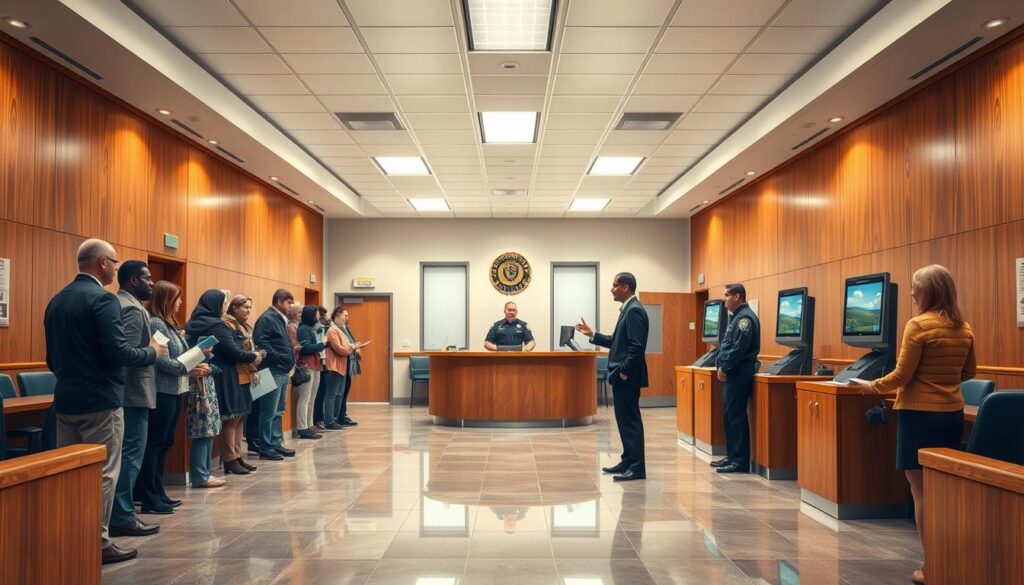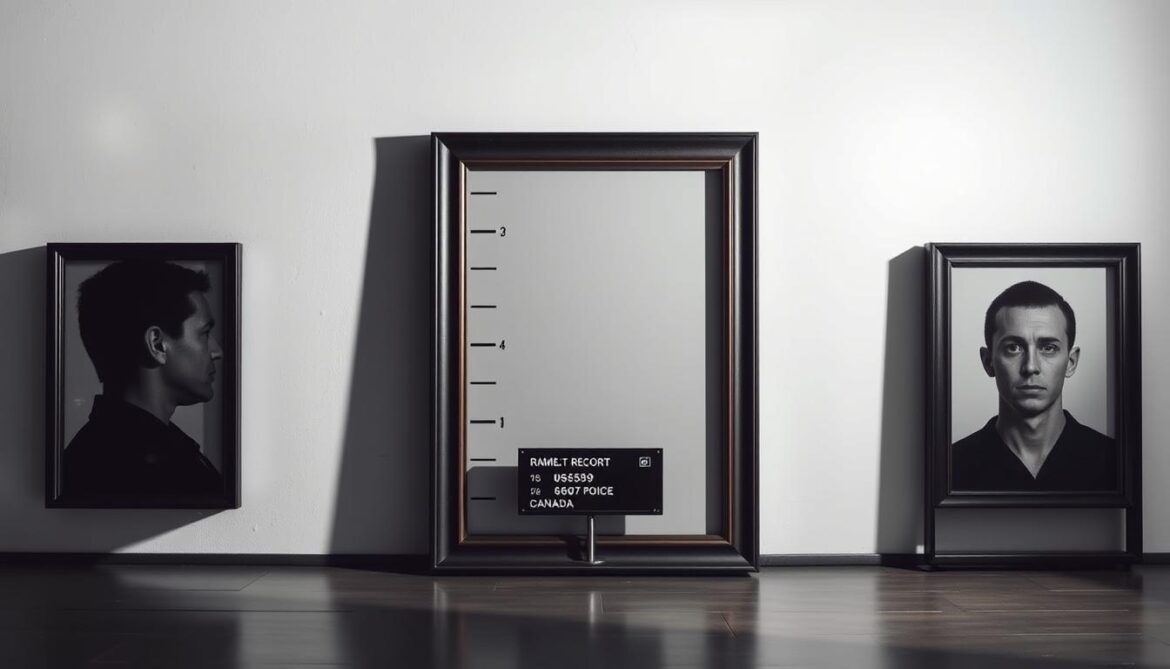Did you know over 2.4 million criminal incidents are reported annually in Canada? Navigating crime records requires understanding how provincial systems balance transparency with privacy protections. While digital tools have streamlined access, local laws and investigative protocols shape what information you can obtain.
Canadian law enforcement agencies like the Vancouver Police Department and Abbotsford Police maintain strict protocols for releasing identification materials. These records serve as critical tools for investigations but face restrictions under federal privacy legislation. You’ll find procedures vary between provinces, with some municipalities offering online portals while others require in-person requests.
Accessing such data involves fees and processing times that depend on jurisdiction. For example, Port Moody Police Department handles requests differently than larger urban centers. Always verify requirements through official channels to avoid delays.
Community safety initiatives increasingly prioritize transparency without compromising active cases. Learn how hate crime trends influence record-sharing policies nationwide. Modern databases now allow faster searches, though traditional methods remain available for those preferring physical documentation.
Knowing your rights ensures you receive accurate information efficiently. Whether you’re researching legal matters or personal safety, understanding these systems empowers informed decisions in Canada’s evolving justice landscape.
Understanding Police Mugshots in Canada
Standardized identification practices form the backbone of Canada’s criminal justice documentation. Provincial systems maintain strict protocols to balance public access with individual privacy, particularly when handling sensitive visual records.
What Are Standardized Booking Photos?
Front-facing and profile images capture distinct physical features during processing. These records include critical details like booking dates, charges, and case numbers. For example, Port Moody officers documented a shoplifting incident on June 5, 2025, at 5:45 p.m., attaching precise timestamps to case files.

Operational Value in Legal Processes
Beyond initial identification, these photos assist in court evidence verification and witness confirmation. A May 24, 2025 assault case resolved faster when 10 p.m. timestamped records matched surveillance footage. Officers follow province-specific guidelines for lighting and positioning to ensure evidentiary validity.
Departments like Port Moody’s restrict public access to active investigations while allowing approved requests post-trial. This approach respects privacy laws without compromising safety initiatives. As one legal expert notes: “Consistent documentation standards protect both institutional credibility and individual rights.”
Accessing Crime Records and Police Reports
Navigating Canada’s crime records system requires understanding jurisdiction-specific rules. Most departments offer structured pathways to obtain documents, but requirements differ based on location and case type.

Guidelines for Finding Information
Start by gathering your case details. You’ll need the file number, incident date, and exact location. For example, Vancouver residents pay $55 (taxes included) to obtain property offence reports covering theft or vandalism.
Officers use standardized forms like MV6020 for vehicle collisions. Provide your contact information and any supplementary details to speed up searches. As one records clerk notes: “Complete requests take half the processing time of incomplete submissions.”
Fees and Procedures Explained
Costs vary depending on document complexity. Basic report copies often have fixed fees, while extensive record searches may incur hourly charges. Check departmental websites for updated rate sheets before submitting requests.
| Service | Fee | Contact Number | Hours |
|---|---|---|---|
| Police Report Copy | $55 | (604) 717-3000 | Weekdays 10 a.m. – 4 p.m. |
| Record Search | Varies | Jurisdiction-specific | Office hours |
Property-related requests dominate report orders. Ensure you specify whether you need documents for insurance claims or legal purposes. Most departments process standard requests within 5 business days.
How to Request Records from Your Local Police Department
Obtaining official documents requires knowing your options. Most departments offer three main methods: visiting in person, mailing applications, or using digital platforms where available. Each approach has specific requirements to ensure efficient processing.

Steps for In-Person Requests
Start by locating your nearest service counter. For example, Vancouver residents can visit two locations:
- 3585 Graveley Street
- 2120 Cambie Street
Both offices operate from 9:30 a.m. to 4:00 p.m. weekdays. Bring valid government-issued ID and payment (cash, debit, or credit). Staff will help you complete forms on-site if needed.
Online and Mail-In Options
For mailed applications, send completed forms to:
Correspondence Unit
Vancouver Police Department
3585 Graveley St.
Vancouver, B.C. V5K 5J5
Include a photocopy of your ID and payment as a certified cheque. Processing typically takes 7-10 business days after receipt.
| Service Type | Cost | Contact | Availability |
|---|---|---|---|
| Document Copies | $55 | (604) 717-3000 | 9:30 a.m. – 4 p.m. |
| Complex Searches | Varies | Local office | By appointment |
Need urgent assistance? Call during office hours to confirm requirements before submitting your order. Phone support can clarify questions about incident details or file numbers but won’t process payments.
Community Impact, Volunteer Engagement and Safety
Canadian neighborhoods thrive when residents and law enforcement work together. Local departments blend professional expertise with community-driven solutions to address safety concerns effectively.

Insights from Local Departments
The Abbotsford Police Department demonstrates this partnership through its team of 220+ officers and 100+ volunteers. These teams handle tasks from victim support to fraud prevention workshops. Port Moody’s Crime Prevention Unit recently expanded its volunteer program, focusing on scam awareness like phone number spoofing tactics.
One officer notes: “Volunteers extend our reach—they’re the eyes and ears that help solve cases faster.” This collaboration helps identify suspects through neighborhood watch programs and public tip lines.
Role of Volunteers and Community Partnerships
You can contribute through three primary volunteer roles:
| Volunteer Role | Services Provided | Contact Method |
|---|---|---|
| Victim Support | Emotional assistance & resource guidance | Local department websites |
| Fraud Prevention | Scam education workshops | Community centers |
| Neighborhood Watch | Patrol coordination | (604) 555-0199 |
These programs build trust while addressing specific local needs. Always verify outreach requests by calling official numbers—scammers often impersonate officers. Your participation helps create safer communities through shared responsibility.
Conclusion
Accessing police mugshots and crime records in Canada requires understanding jurisdiction-specific procedures. Each region sets unique requirements for obtaining documents, from application formats to processing fees.
Options like in-person requests, mailed forms, or digital portals vary by location. Fees range from standard charges to potential waivers, requiring direct consultation with local offices.
Community partnerships strengthen safety initiatives through volunteer programs and fraud prevention workshops. Knowing your rights ensures requests respect privacy laws while securing necessary information.
Modernized systems now balance accessibility with security, offering faster searches without compromising legal standards. Whether addressing personal concerns or legal matters, these tools empower informed decisions in Canada’s evolving justice framework.

